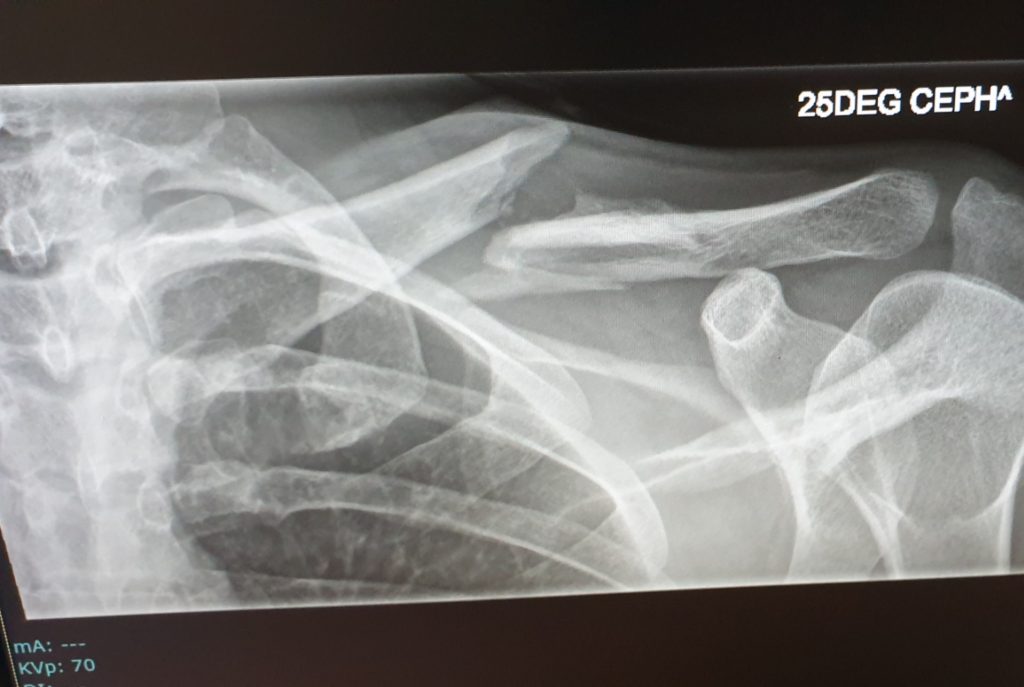It’s easy to feel low when you’re stuck at home nursing an injury. But that’s the last thing you want to be doing! Apart from impacting your health and well-being, a low mood will slow down your recovery. The temptation to lie around and watch Netflix is real. But it’s important to understand the importance of mental health during physical recovery. Not all forms of injury will allow you to stay active physically, however you can keep your mind active.
In this week’s wellness blog, our Marketing Manager, Ben Giltrap, shares some simple tips to help keep you well and positive during recovery.
I discovered a new hobby during COVID-19 – mountain biking. I learned to ride when I was quite young so being on two wheels is second nature to me. It feels right to be flying down a mountain on a bike. The problem, however, is my skills did not match my confidence. After a few close calls, I had a serious mishap and broke my collarbone – ouch! Now, a clavicle fracture is a unique as there is very little that can be done aside from inserting bolts and plates. Non-operative treatment (which I ended up opting for) involves rest in a sling for 6 weeks or more, with the total time to full healing of the bone between 8 and 12 weeks. That’s a long time to be out of action!
As someone who is active and energetic I was not looking forward to the recovering period. Through my research and experience, here are some things I discovered about recovering well.
1. Stay positive
Staying positive is helpful in a few different ways. Research has found positive people heal faster and positive thinking improves physical health. On top of that, being positive provides the confidence that you will be able to return to your previous skill level following recovery.
I’m all for having a growth mindset but getting hung up on your mistakes while you are trying to recover is not helpful. Instead, focus on your recovery efforts and set aside some time post-recovery for reflection. The reflection should focus on things you can control and be framed as a learning opportunity (for example with set training goals to achieve).
Reframing is also important to staying positive. Whether you are feeling down about being cooped up inside or having limited mobility. Reframing allows you to see it as opportunity to take a break from your busy life or connect with others for assistance.
2. Keep active
Always talk to your doctor before returning to any form of exercise after an injury. Once you get the all clear, experiment with strength training other parts of your body, walking, swimming, or meditation. Go slow, modify, prioritise good form, and avoid pushing too hard, so that you don’t aggravate or extend your injury. Remember to get outside when you can as increasing your vitamin D intake has many benefits.
3. Focus on food
Possibly the most important part of the recovery that most people underestimate is how much energy is consumed by healing body parts. And when we’re talking energy we’re of course talking about calorie consumption. It is widely accepted that your energy needs increase during physical activity. For example, you need to make sure to eat the right amount before doing a big run or work out. The same thing applies when you’re healing – with research showing energy expenditure can increase between 15% – 50%. Now before you get carried away, I’m not advocating that you smash as much food as you want. And if you were training rigorously for example as a professional athlete, this would mean your calorie intake would need to decrease slightly. A simple way to calculate caloric need for injury is 30 to 35 calories per kilo per day for moderate injury and 35 to 40 calories per kilo per day for critical injury.
In general, your normal varied diet should suffice however you might need to look over your micro nutrition with your dietitian. For example, your carbohydrate intake may need to be lowered due to inactivity but your protein and fat intake may need to increase to stimulate growth of new tissue. This will help you get back to the activity you love soon!
4. Be patient
Don’t push return to normal activity or be tempted to use your restricted body – even if you feel you can do this. For me, this was typing. However, I got creative and used a voice to text app to get my words down, even though it can be inaccurate some of the thyme. Being patient allowed me to: recognise I was healing so I could let go of performance expectations, laugh despite the challenges and get creative.

I hope you find these suggestions helpful! As always, please let us know if there are any topics you would love us to look into or you have any queries or feedback. You can reach us here.


